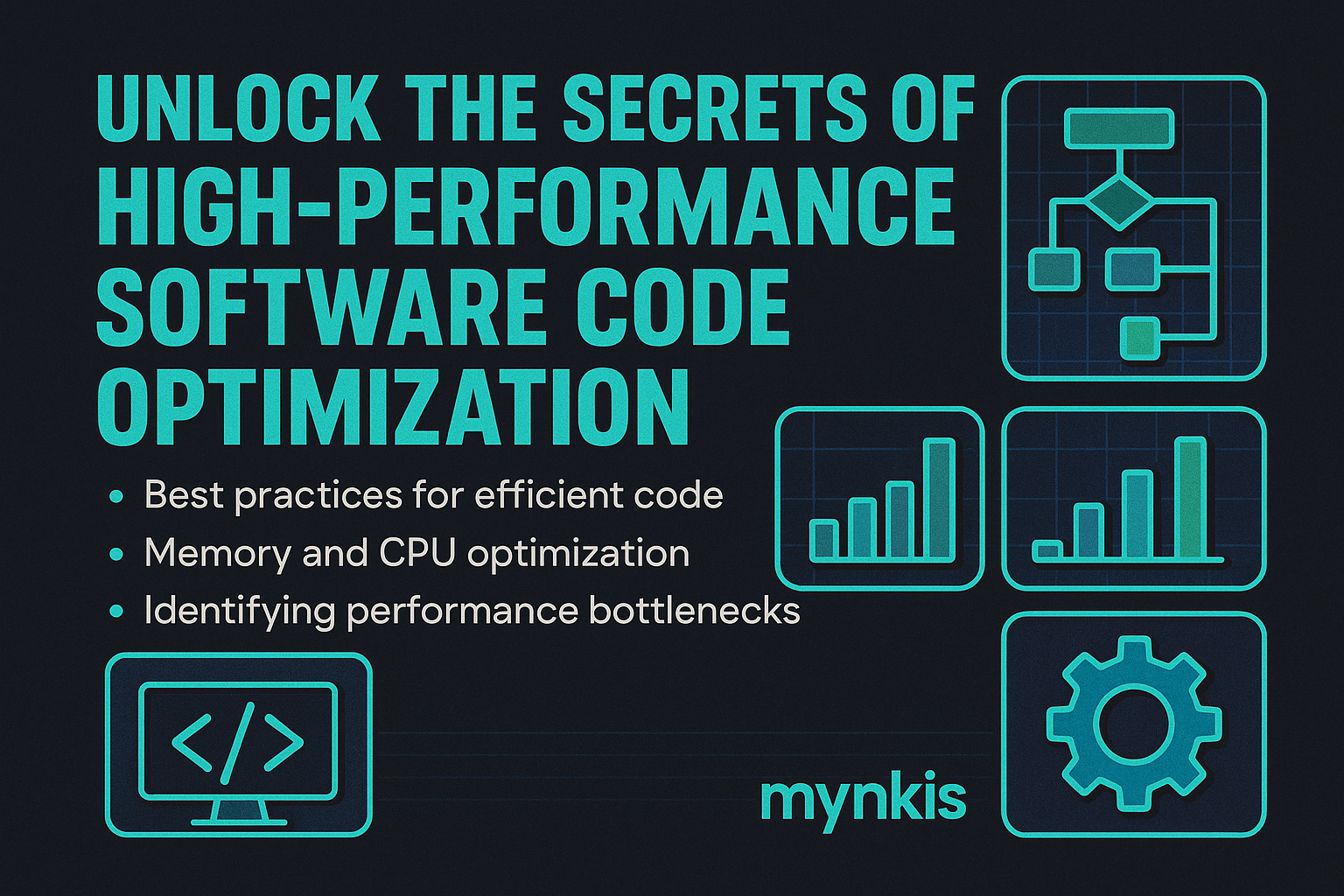Schedule a Demo
In the realm of custom software development, where every millisecond counts, understanding the intricacies of code optimization is not just a luxury—it's an absolute necessity. But what does it mean to truly optimize code? It's not merely about shaving off a few lines here or tinkering with some algorithms there; it's a deeply analytical process aimed at enhancing both the performance and the efficiency of the software we create.
Code optimization plays a critical role in reducing operational costs for businesses while simultaneously improving the user experience. When I think back to the dozens of projects I've collaborated on, the importance of optimization always surfaces as a key factor in achieving seamless, high-performing applications that can handle robust usage without a hitch. This not only aids in better search engine rankings for your website but also ensures that your digital presence remains fast and reliable.
Let's dive into the foundational aspect of code optimization—algorithm efficiency. Algorithms are the heartbeats of our software, dictating how quickly our applications can process data or react to user inputs. By choosing or designing algorithms that have lower time complexities, we can dramatically speed up our software's operations. But it's not just about time; space complexity is also a factor that needs careful consideration. Sometimes, a slightly slower algorithm can be preferable if it uses far less memory, proving that code optimization is as much about choosing the right compromises as it is about speed.
Another cornerstone of high-performance software is mastering memory management. Inefficient use of memory can lead to applications that are sluggish, unresponsive, and prone to crashes—all of which can be detrimental to a user's perception of your service. I've found that by regularly profiling our applications and understanding where the memory bottlenecks are, we can take targeted actions to optimize those areas, thereby creating smoother, more robust software.
Code refactoring is an often underappreciated, yet essential, part of the optimization process. It involves restructuring existing code without changing its external behavior to improve non-functional attributes like performance. This practice, when done well, can make a significant difference in the long-term health and speed of your software. I always advocate for regular refactoring, as it keeps the codebase clean and efficient, ultimately allowing for faster future updates and expansions.
Compilation techniques and intelligent use of caching also play a vital role in achieving high-performance software. The right compiler can transform your code into machine language that runs with optimal efficiency. On the other hand, implementing robust caching strategies reduces the load on your server, ensuring quicker response times. Understanding when to use which method or both can radically improve how your software performs under various conditions.
In today's environment where multi-core processors are the norm, leveraging threads and parallel processing has become more critical than ever. This approach can significantly cut down the wait times for CPU-intensive tasks. In my work, I've observed how efficiently designed thread management can lift the overall performance of enterprise applications, making them scalable for future growth.
Your software is only as fast as your database. Optimizing how you store and retrieve data can lead to monumental leaps in software performance. Indexing the right columns, fine-tuning query statements, and managing how data is accessed can vastly enhance your software's speed. Reflecting on various projects, I've noticed that well-optimized databases are often the unsung heroes behind responsive applications that impress users every time.
Now, linking back to why business owners should care about code optimization for high-performance software—SEO performance is intrinsically tied to the speed and responsiveness of your site. Google and other search engines prioritize pages that load quickly and serve users efficiently. Thus, by optimizing your code, you're not only enhancing user experience but also bolstering your SEO efforts, which can drive organic growth in an impactful way.
The technological landscape offers a plethora of tools and techniques that can assist in optimizing your code. From automated profiling tools to static code analyzers, and from compilers like GCC to cloud-based code optimization services, you have no shortage of resources to help streamline your code. I always stress the importance of picking the right tool for the job—it can be the difference between a bottlenecked application and one that runs like a well-oiled machine.
It's one thing to discuss the theory behind code optimization and another to understand its tangible impact. For small businesses, the difference can mean the ability to process more orders or manage larger inventories without adding new hardware. For enterprises, we're talking about maintaining thousands of concurrent users with zero downtimes or efficiently handling vast quantities of data. At each scale, the benefits of optimal code performance resonate deeply.
The journey of optimization does not end post-launch. Continuous performance monitoring is key to maintaining the high standards you set. Adopting modern tools like Application Performance Monitoring (APM) can provide ongoing insights into how your software is performing. It's crucial to track key performance indicators over time, allowing for iterative improvements that keep your software at the pinnacle of its class.
As new technologies emerge and old ones evolve, the best practices for code optimization shift as well. Keeping abreast of these changes is pivotal for businesses wanting to maintain an edge with enterprise web solutions. Whether it's a new way of handling async operations or a revolutionary data management system, being on top of technological trends can enable smarter optimization strategies.
Finally, in the push for code optimization, it's important to balance speed with code readability. High-performance code that no one else can understand or maintain because of its esoteric structure ultimately harms your project's longevity. Clear documentation and clean, maintainable code principles should always accompany any optimization efforts, ensuring your software remains both a joy to work with and a joy to use.
